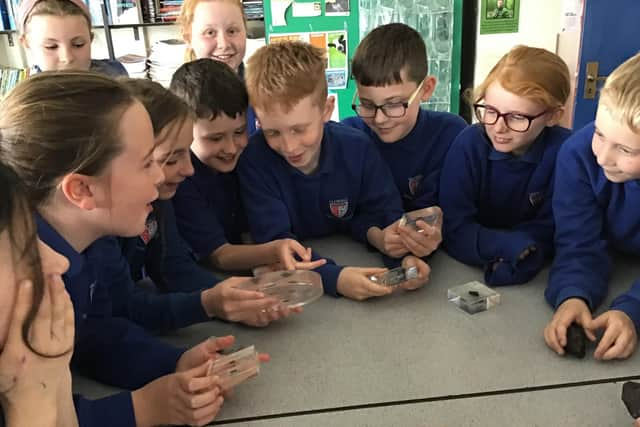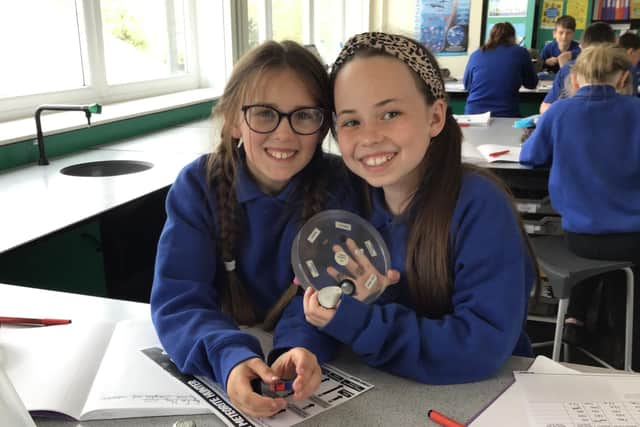Science lessons at Northumberland school are out of this world!
and live on Freeview channel 276
Students were encouraged to reach for the stars and learn more about the universe around us during a week-long interactive experience of astronomy and space science organised by science coordinator, Catherine Johnston.
Miss Johnston said: “It’s a fantastic opportunity for a small middle school in rural Northumberland and we were able to show the samples to children at Wooler First School too.
Advertisement
Hide AdAdvertisement
Hide Ad"All pupils were given the unique opportunity to actually touch a piece of space rock, as they were allowed to handle some genuine meteorites.


"It’s an experience that I hope they will remember for a long time and perhaps it might inspire some them to study astronomy or physics in the future.”
These rare samples were provided free of charge by the UK’s Science and Technology Facilities Council (STFC), which provides educational packs in a bid to inspire young people to get involved in science and complement classroom studies.
The pack provided by STFC includes a 1.2 billion-year-old piece of Mars rock and a 4.3 billion-year-old nickel meteorite.
Advertisement
Hide AdAdvertisement
Hide AdThe packs have been recently updated to also include a new meteorite hunter’s kit, new teacher planning pack and exciting new web-based resources and online support videos for all age groups, primary to secondary.


The lunar samples were collected in the late 1960s and early 1970s during some of NASA’s first manned space missions to the Moon.
During these missions, a staggering 382kg of material was brought back to Earth – mostly for use by scientists, but small quantities are used to develop educational packs like this one.
Samples like these can tell us a great deal about the planets, from which they originate, but there is still much to learn.
Advertisement
Hide AdAdvertisement
Hide AdSTFC’s executive chair, Professor Mark Thomson, said: “Samples like these are vital in teaching us more about our solar system, allowing us to confront theory with fact. We hope this experience will encourage the students to take up a career in science."